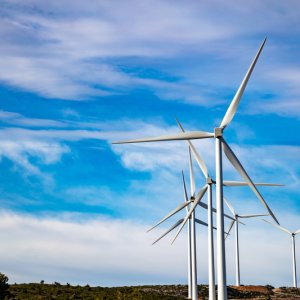
Mexico's Path to Clean Energy: Challenges and Controversies
 By Karin Dilge | Journalist and Industry Analyst -
Thu, 06/01/2023 - 14:01
By Karin Dilge | Journalist and Industry Analyst -
Thu, 06/01/2023 - 14:01
Mexico, like many nations, has committed to reducing greenhouse gas emissions and increasing clean energy generation as part of the Paris Agreement. However, recent changes in the methodology for calculating renewable energy generation have raised concerns about Mexico's progress in meeting its targets. While the country aims to increase clean energy generation to 35% by 2024 and 43% by 2030, experts argue that this alone will not be sufficient.
Mexico pledged to reduce black carbon emissions by 51% and greenhouse gas emissions by 22% by 2030. However, the country emitted 683 million t of CO₂ equivalent in 2015, with the transportation sector being the largest contributor to these results. By 2019, greenhouse gas emissions had risen to 736.6 million t of CO₂, with electricity generation accounting for 22.6% of the total. To achieve its targets, Mexico needs to focus not only on increasing clean energy generation but also on replacing polluting energy sources with renewables.
Role of Methodological Changes
Mexico's National Institute of Ecology and Climate Change (INECC) reported that in 2022, the country generated 31.2% of its electricity from renewable sources, a modest increase from the previous year. However, this was largely due to changes in the methodology of energy calculation approved by the Energy Regulatory Commission (CRE). These changes allowed the inclusion of energy generated by combined cycle and cogeneration plants as clean energy sources, despite their reliance on natural gas.
The revision in methodology has sparked controversies regarding its impact on Mexico's clean energy goals. Critics argue that the inclusion of combined cycle and cogeneration plants as clean energy distorts the true progress in reducing emissions.
Carlos Flores, an energy sector specialist, emphasizes that the substitution of polluting energy sources with renewables is essential for emission reduction. The changes in methodology provide economic incentives, such as Clean Energy Certificates (CELs), which benefit CFE and favor specific types of energy generation.
The implementation of the new methodology has also stirred debates regarding Clean Energy Certificates (CELs). Critics argue that the counting of CELs has become distorted and detached from the objectives of addressing climate change and promoting energy transition. The controversy lies in the inclusion of existing assets, leading to concerns that CELs are being used for investment recovery rather than promoting new clean energy capacity.
While changes in methodology have enabled higher clean energy figures in official reports, concerns remain about the true progress in reducing emissions. The focus should not solely be on increasing clean energy generation but also on replacing polluting energy sources. The controversies surrounding the counting of Clean Energy Certificates highlight the need for a more comprehensive and transparent approach to measure progress in achieving Mexico's clean energy goals.
Despite this, the Mexican government remains optimistic about achieving its clean energy goals. The new rules have allowed for the inclusion of non-renewable clean energy sources, such as nuclear and highly efficient cogeneration plants, contributing to a higher percentage of clean energy in the national generation mix. The government predicts that by activating additional combined cycle capacity and incorporating more generation, Mexico will reach its target of 35% clean energy by 2024.
















